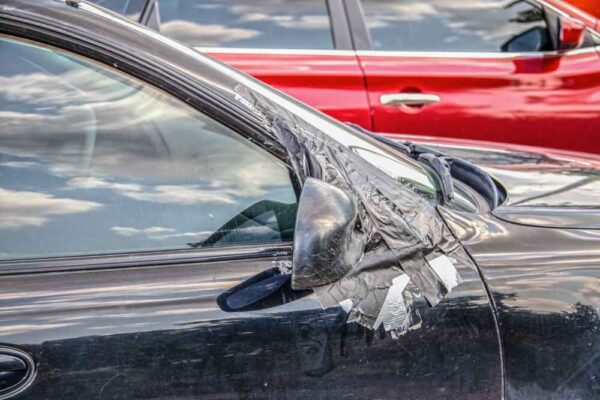
Wrap-Up Liability Insurance
Large construction projects can be tough to manage, especially with dozens of contractors and subcontractors working on-site at once. Meeting the project deadline is one thing, but organizing the process and making sure everyone is properly covered is a whole different challenge. With each contractor carrying his own coverage, it can lead to a scattered insurance structure, increasing the risk of coverage gaps and duplicate premiums.
That’s where Ontario’s wrap-up liability insurance steps in. By covering all the parties involved in a large construction project, wrap-up liability insurance reduces the risk of coverage gaps, duplicate costs, and confusion when something goes wrong. In this article, we will break down everything you need to know about wrap-up insurance: what it is, how it works, and when you need it.
Owner-Controlled Insurance VS Contractor-Controlled Insurance
There are two types of wrap-up liability insurance, each of which depends on the party that buys and manages the policy. Although both insurance policies offer the same benefits, they differ in terms of who controls the coverage.
Owner-Controlled Wrap-Up Policy
An owner-controlled insurance program (OCIP) is when the project owner purchases coverage on behalf of all the contractors and subcontractors working on the construction project. This policy provides commercial general liability insurance and may include builder’s risk insurance, professional liability insurance, and umbrella insurance. This type of wrap-up insurance gives the project owner full control over policy terms, coverage limits, and premiums.
Contractor-Controlled Wrap-Up Policy
A Contractor-Controlled Insurance Program (CCIP) is a wrap-up insurance purchased by the general contractor working on the project. It offers the same type of coverage as the owner-controlled policy, but this time, it’s the general contractor who has control over the policy. He’ll be responsible for managing the policy, enrolling subcontractors, and ensuring that the policy provides sufficient coverage for everyone working on the project.
A contractor-controlled policy is usually preferred over an owner-controlled policy because it often costs less while offering higher coverage limits. Moreover, the general contractor is more involved in the project, which gives them better insight into the liability risks during the construction project.
What Does a Wrap-Up Liability Insurance Policy Cover in Ontario?
Wrap-up insurance covers several liability risks that can happen on a construction site, including third-party bodily injury, property damage, and other accidents or negligence on the job site. This policy is ideal for large construction projects exceeding $5,000,000 because it protects everyone involved in the project under one comprehensive coverage.
You can customize your wrap-up coverage according to the needs of your project. Below are some of the coverage types that can be included:
General Liability with a Broad Form Endorsement
This coverage protects against third-party liability claims involving bodily injury caused by work on the job site. It also covers third-party property damage caused by construction activities, including damage to nearby buildings or vehicles. The broad form endorsement allows you to extend your coverage to include additional risks, such as personal injury and damage to your property. You can also add completed operations coverage to protect against claims that arise after the project is finished.
Builder’s Risk Insurance
Builder’s risk insurance is a form of property insurance that covers the building or the job site and construction materials from property damage caused by insured events. This policy, also known as construction insurance, covers losses resulting from events like fire, theft, vandalism, windstorms, and certain types of water damage. Check with your insurance provider in Ontario to learn more about your coverage details and exclusions.
Professional Liability Insurance
PLI in Ontario protects construction professionals from claims of errors, negligence, and unintentional mistakes in the service they provide. This insurance coverage is highly important for architects, engineers, and anyone whose design or decision impacts the project. Professional liability insurance, also known as errors and omissions insurance, covers legal fees, settlements, and other costs associated with the claim.
Workers’ Compensation Insurance
This insurance policy covers all the contractors and subcontractors on the project against work-related injuries, illnesses, or accidents that occur on the job site. It helps pay for medical expenses, rehabilitation fees, lost wages, disability benefits, and death benefits when needed.
Umbrella Liability Insurance
No need to worry about insufficient limits for commercial general liability insurance anymore. In simple words, umbrella liability insurance is considered to be an extension of the general liability policy you have in your wrap-up insurance. It provides excess liability coverage beyond your standard policy. For example, if your primary general liability policy covers up to $2 million, and you receive a claim costing $4 million, the umbrella liability can cover the remaining $2 million.
This policy is recommended for large construction projects with a wide scope of work, multiple parties, and high general liability exposures.
Commercial Auto Insurance
A standard wrap-up liability insurance doesn’t include commercial auto insurance, but you can add it to your policy if your project involves the use of trucks, vans, or other vehicles. This insurance coverage protects against accidents, injuries, or property damage caused by collisions.
Pollution Liability Insurance
Pollution liability insurance is another additional coverage that you can add to your wrap-up liability policy. This coverage protects you against claims of pollution-related damage, such as the release of hazardous materials, chemical spills, or contamination caused by your construction activities. Pollution liability coverage pays the cost of cleaning up the affected area, legal fees, and any costs associated with claims of pollution-related damage.
Top Reasons General Contractors and Project Owners Need Wrap-Up Liability Insurance
Unified Comprehensive Coverage
Instead of having each contractor and subcontractor have their own coverages from different insurance providers, a wrap-up insurance policy provides a unified, comprehensive solution. This insurance coverage provides protection to all the parties involved in the construction project, ensuring everyone is covered under the same policy terms, limits, and exclusions.
Simplified Insurance Process
Wrap-up liability insurance allows project owners or general contractors to manage all their insurance needs for a specific construction project under one policy. This type of commercial insurance minimizes administrative work by handling enrollment, documentation, and the claim process under one system with the same insurance provider.
Protection Against Gaps
Imagine this: You’re the manager of a huge construction project with dozens of contractors and subcontractors working on it. If each one of them brings their insurance policy with different limits and exclusions, it’ll be almost impossible to ensure appropriate coverage across the entire project. This can lead to potential risks, including coverage gaps, uninsured losses, and delays within the project.
Wrap-up liability insurance protects against gaps in coverage that can occur when multiple contractors purchase their individual insurance policies.
Custom Coverage Limits
Each construction project has its own requirements, so one-size-fits-all solutions aren’t really going to work. Wrap-up liability insurance gives the entity controlling the policy, either the project owner or the general contractor, the flexibility to choose coverage limits and additions in order to fit the project. Whether you need higher coverage limits or additional protection, wrap-up policies can be adjusted to fit your project needs.
Completed Operations Coverage
Sometimes, issues arise after a project is completed; this especially happens with large construction projects with long timelines and complex structures. You can add completed operations coverage to your wrap-up policy to protect against claims that are filed after the work is complete. These claims can result from errors with the workmanship, materials, or installation that don’t really show until the building is in use. Without this coverage, you will find yourself paying quite a lot for legal fees, repairs, or damages resulting from these claims.
What Is a Wrap-Up Insurance Exclusion in Ontario?
A wrap-up exclusion in Ontario refers to an endorsement used to remove coverage from a contractor who is already covered under a wrap-up insurance program. This prevents overlapping between the contractor’s own insurance policy and the wrap-up policy, which helps to avoid confusion when filing a claim.
What’s Not Covered by Wrap-Up Liability Insurance in Ontario
- Pollution Liability: A typical wrap-up insurance policy doesn’t cover pollution-related damage, and if you want to have it covered, you should get additional coverage.
- Suppliers and Vendors: Suppliers, vendors, and other parties that sell and deliver materials aren’t covered by the wrap-up policy.
- Existing Damage: If you’re working on a project that already has defects or damage, your wrap-up liability insurance won’t cover these pre-existing conditions.
- Completed Operations: If you don’t buy this coverage as an add-on, your standard wrap-up liability policy may not cover it. It’s better to check with your insurance broker to ensure that this coverage is included in your policy.
- Uninsured Parties: It goes without saying, but anyone working on the project who isn’t enrolled in the wrap-up program won’t be covered.
To learn more about wrap-up liability insurance coverage details, limits, and exclusions, contact our insurance experts today and get the immediate assistance you need.
How Much Is Wrap-Up Liability Insurance? A Cost Breakdown
The cost of wrap-up liability insurance varies from one project to another, depending on several key factors, such as:
- Size of the Project
- Total Construction Cost
- Project Complexity and Risk Factors
- Number of Contractors and Subcontractors
- Project Location and Duration
- Claims History
On average, your insurance premium for wrap-up insurance is calculated as a percentage of the total construction cost, mostly around 1% to 3%. For example, if the construction cost of your project is $7 million and your premium is 1.5% of the cost, you’ll be paying $105,000 for your policy. This premium covers all eligible contractors and subcontractors under one unified policy, reducing the risks of coverage gaps, uninsured losses, and overlapping policies.
Do You Really Need Wrap-Up Liability Insurance in Ontario?
The short answer is yes, you totally do. If you’re managing a large construction project with multiple contractors and subcontractors, wrap-up liability insurance isn’t optional; it’s a must. You might think it’s expensive or unnecessary at first, but the cost of uninsured losses, legal disputes, or overlapping policies can be far more damaging in the long run. Wrap-up liability insurance provides comprehensive coverage for everyone on-site, which simplifies claim handling and risk management.
Steps to Obtaining Wrap-Up Liability Insurance for Your Project
- Before securing your wrap-up liability policy in Ontario, we recommend collaborating with a licensed insurance broker to guide you through the process.
- Your insurance broker will help you determine whether you should opt for owner-controlled insurance or contractor-controlled insurance.
- Assess the project’s value, scope, duration, and risk factors.
- Gather information for your project, including the total construction value, number of contractors and subcontractors, project timeline, and any potential risks.
- Your insurance broker will help you customize your coverage according to the project.
- Once your policy is finalized, confirm coverage details and ensure everyone is enrolled before your policy is active.
- Stay in touch with your insurance broker throughout the project to handle any mid-project changes or claim-related issues.
Wrap-up Liability Insurance FAQs
What does “wrap-up” mean in insurance?
“Wrap-up” in insurance refers to a unified comprehensive insurance policy that wraps up liability coverage for all parties involved in a construction project. This policy covers the project owner, contractors, and subcontractors under one coverage instead of having each of them carry their own policy.
How long does wrap-up liability insurance last?
Wrap-up liability insurance usually lasts until the construction project is complete. You can also buy an add-on for completed operations coverage to protect against the claims that arise after the project is complete. Many wrap-up insurance policies include completed operations coverage automatically, but others may require it to be added separately.
What’s the difference between an owner-controlled insurance program (OCIP) and a contractor-controlled insurance program (CCIP)?
An owner-controlled policy is purchased and managed by the project owner, which allows him to have full control over coverage terms, risk management, and claims handling. Meanwhile, a contractor-controlled policy is purchased and controlled by the general contractor. Both options offer the same benefits, but they differ in terms of who is responsible for managing the policy.
What is a wrap-insurance exclusion?
A wrap-up insurance exclusion is an endorsement added to a contractor’s own insurance policy to remove coverage for a project that’s already covered by a wrap-up policy like an OCIP or CCIP. It helps avoid duplicate coverage and keeps things clear if a claim happens.
You Might Want to Read
June 15, 2025
Sideswipe Collision: Who Is at Fault in Sideswipe Accidents?
June 15, 2025
Least Depreciating Cars in Canada
June 5, 2025
Welcome to the Team Keyes Insurance


